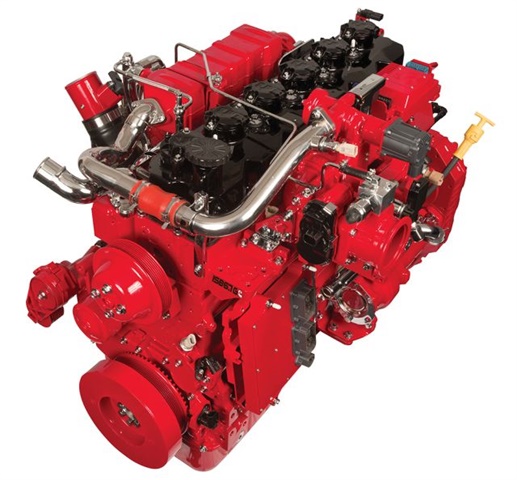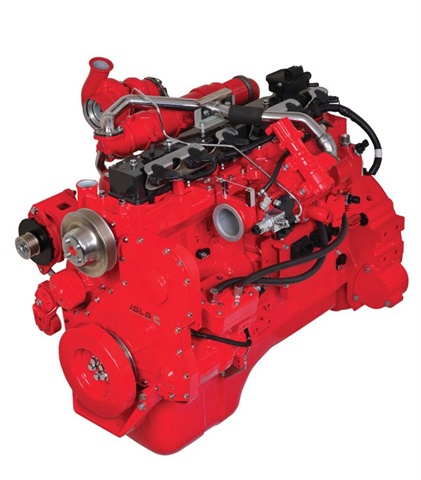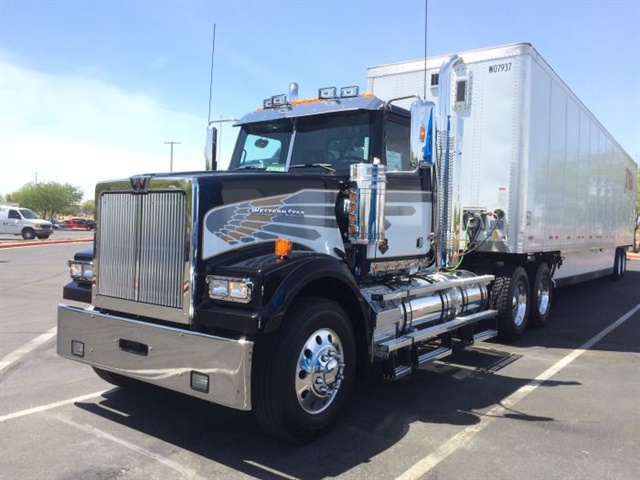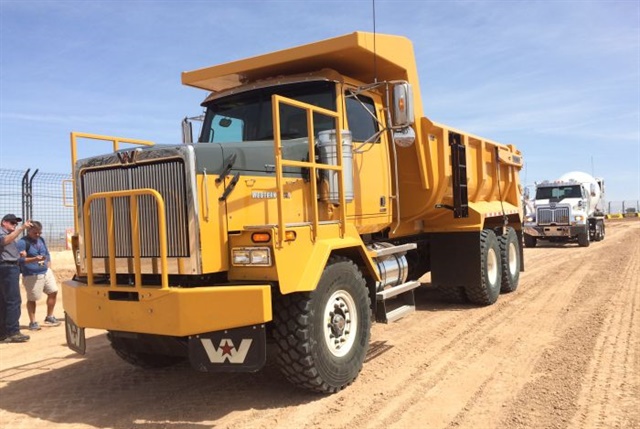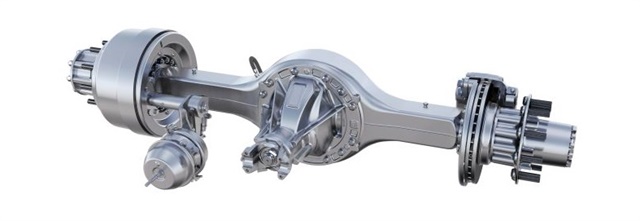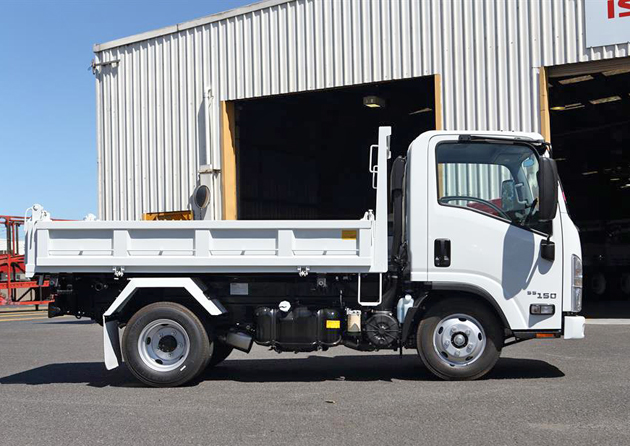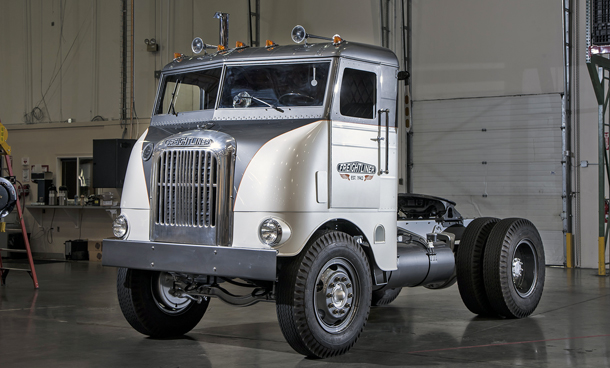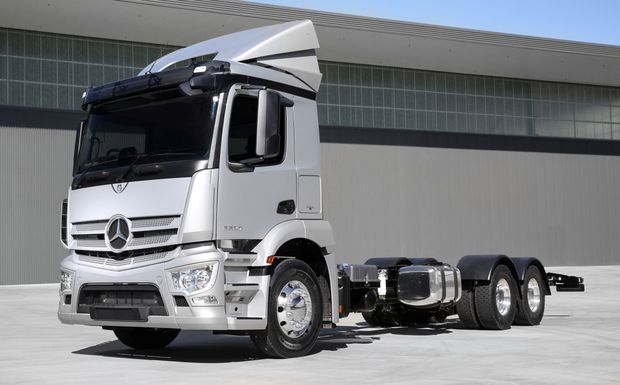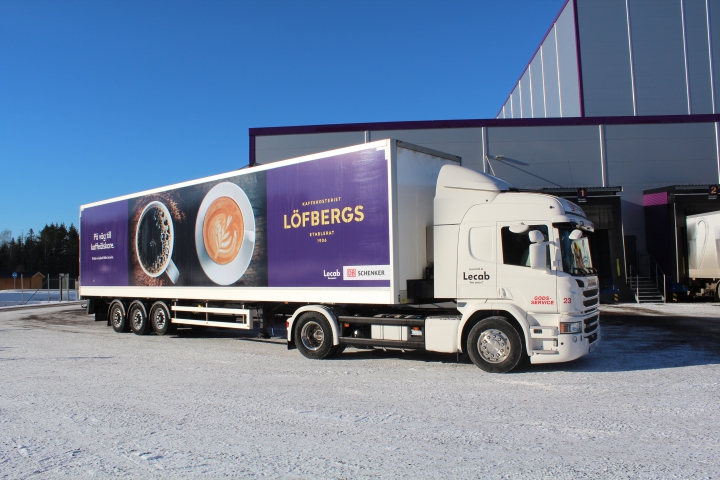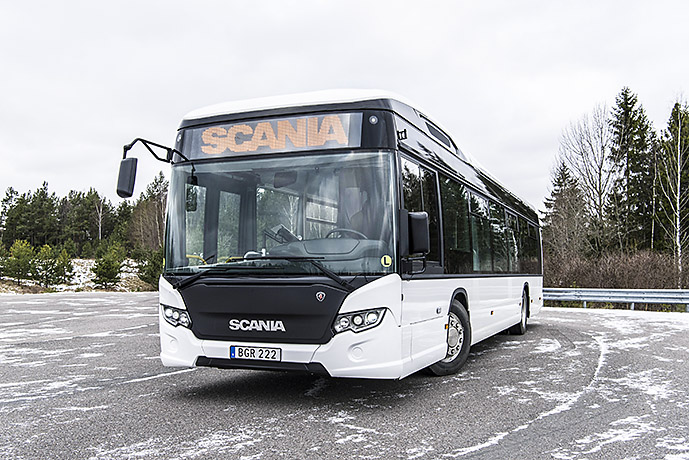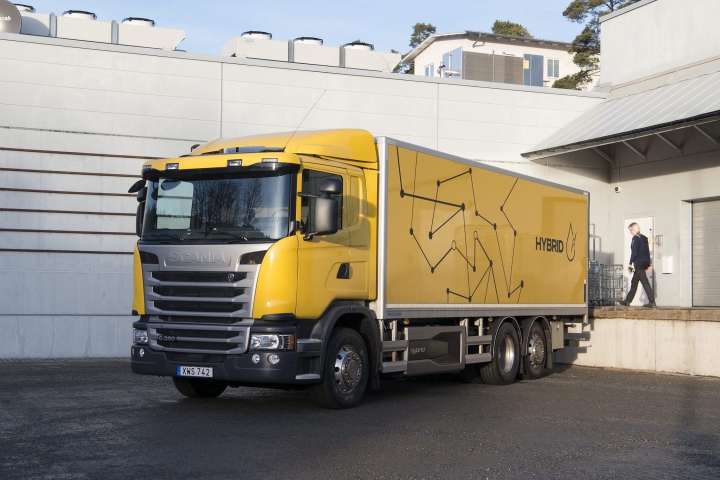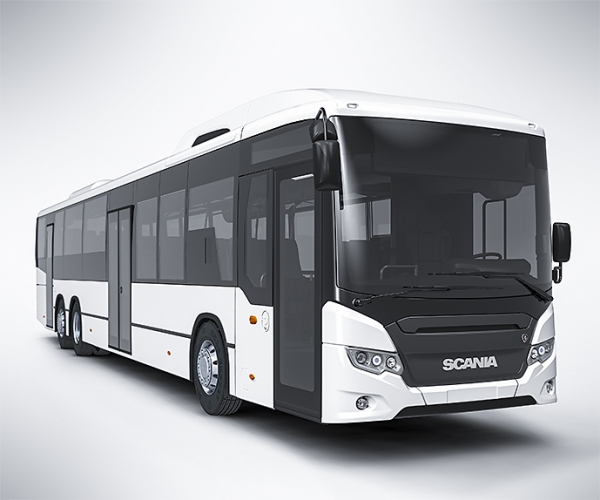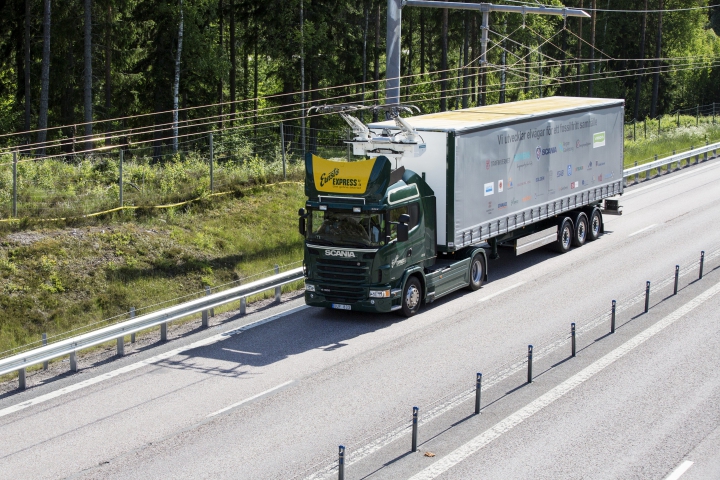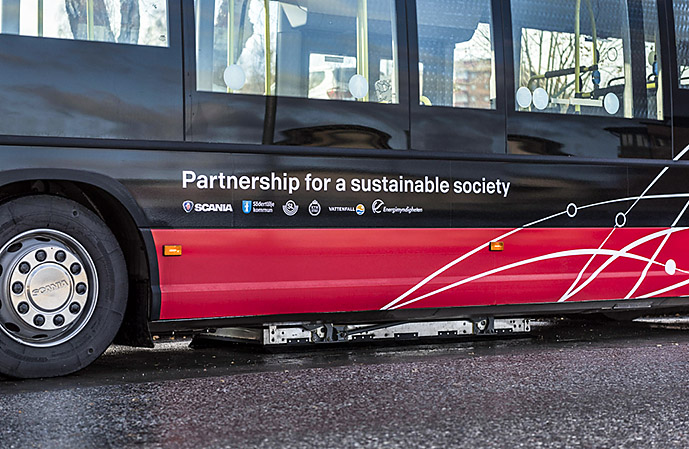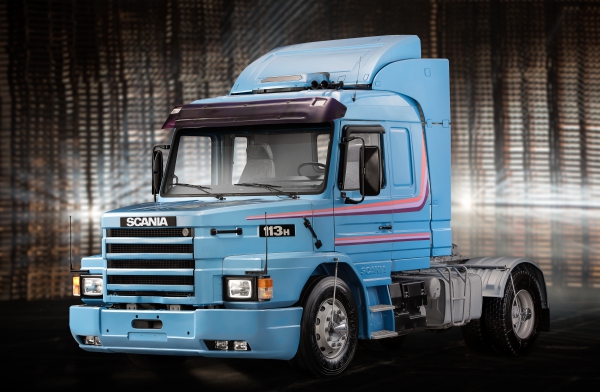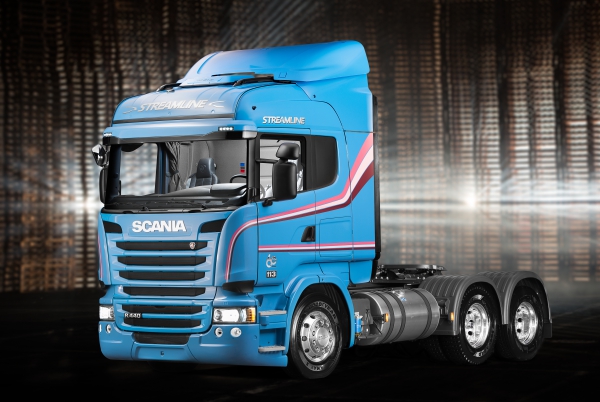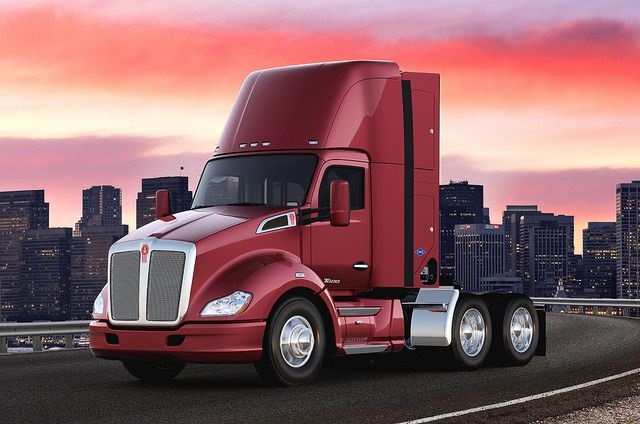
kscarbel2
Moderator-
Posts
17,893 -
Joined
-
Days Won
86
Content Type
Profiles
Forums
Gallery
Events
Blogs
BMT Wiki
Collections
Store
Everything posted by kscarbel2
-
Heavy Duty Trucking / April 27, 2017 Cummins Westport announced its model-year 2018 lineup of renamed natural gas engines for regional haul, vocational, transit, bus, and refuse applications. The new lineup comes with a name change. Following Cummins' tradition of using B, L, and X series letters followed by the engine displacement, the new natural gas engines will add an “N” designation. The new B6.7N, L9N, and ISX12N engines are EPA and California Air Resources Board (CARB) Low NOx certified and feature onboard diagnostics, closed crankcase ventilation systems, and performance and reliability improvements. The new ISX12N also features a redesigned fuel system with fewer parts and improved performance. Cummins Westport 6.7- to 12.0L engines are designed for truck and bus applications up to 80,000 pounds. Vehicles can be tailored to perform to meet customer requirements with enough range to offer route flexibility without in-route refueling. For example, on-highway natural gas trucks can have over 700-mile range capability. All CWI engines offer customers the choice of using compressed natural gas, liquefied natural gas, or renewable natural gas as a fuel. Using a low carbon intensity RNG fuel provides better GHG reductions and is part of the company’s zero emissions strategy. Cummins Westport engines use proprietary spark-ignited, stoichiometric combustion with cooled exhaust gas recirculation technology, and three-way catalyst aftertreatment, which is packaged as a muffler and does not require scheduled maintenance. No diesel particulate filter or selective catalytic reduction aftertreatment is required. “Our 2018 product line demonstrates an important milestone in product development for Cummins Westport, creating a move to zero emissions strategy for our customers and industry," said Rob Neitzke, president of Cummins Westport. "We are particularly pleased that the ISX12N will join the L9N in offering our on-highway customers the benefits of performance and reliability at an ultra-low emissions level described by California's South Coast Air Quality Management District as equivalent to an electric vehicle. This move to zero emissions strategy means our customers can choose the most affordable path to zero-equivalent emissions with no commercial constraints on supply or technology readiness." .
-
Heavy Duty Trucking / April 27, 2017 Half a century looks pretty good on Western Star. The truck OEM, which company president Kelley Platt likes to tout as "the last of the custom truck builders," has hit the half-century mark and celebrated with a press event in Phoenix, Arizona, to unveil a host of equipment upgrades and present the Owner-Operator Independent Drivers Association a new Model 5700XE tractor to use in its efforts to promote both owner-operators and the trucking industry at large. A host of new trucks were on hand for test drives as well, sporting eye-catching new paint jobs that recreate the colors and patterns Western Star used for its show trucks back in the 1970s. At a press briefing, Platt reviewed Western Star's performance so far this year, as well as the state of the trucking industry overall, noting that the brand's parent company, Daimler Trucks North America, is seeing signs of market recovery nationwide that could lead to an uptick in freight volumes. Platt said she still expects Class 8 volume to be at or near 198,000 units this year, adding that Western Star built 7,323 trucks last year, putting the company at 3.8% market share. Platt said that given Daimler's market share numbers for the past few years, the vocational market is a natural space for Daimler to grow in — an effort that favors Western Star's tough, vocational models. Based on those goals, Platt said she expects to see Western Star's market share grow to 8% by 2025. In other news, Western Star announced a host of new features and options for its model lineup, including: Detroit 23,000-pound front steer axle for 4800 and 4900 truck models, designed for applications that require a higher front axle weight rating like snow plow, dump and heavy haul. 5-Man Crew Cab option: The 4700, 4800, 4900, and 6900 truck models can now be spec’d with an aftermarket-installed 5-man crew cab option with either two or four doors. A new Western Star 5700 truck configuration for expeditor and RV applications in available in a day cab or sleeper. Another new features is RollTek Seats, which inflate side-impact airbags, tighten seat belts and compress air suspension seats to the lowest position to prevent serious injuries to the driver, in the unlikely event of a rollover. In addition, sealed frame rails for Western Star 4700, 4800, and 4900 truck models reduce corrosion on double channel and partial liner configurations. The company also unveiled a new, smaller, 25-ton, off-highway truck for construction, mining and quarry site hauling. The new XD-25 is available with a Tier 3 Series 60 or Detroit DD13 engine, and is powered by the Allison Off Road Series (ORS) transmission and planetary gear sets. Together, the engine and transmission combination results in more power for loaded applications and higher speeds when unloaded. “The XD-25 provides yet another extreme duty option for customers who tackle the toughest challenges,” said Platt. “These units are specifically designed to handle off-road jobs without compromising fuel economy and cycle time efficiency.” .
-
Heavy Duty Trucking / April 27, 2017 Meritor has announced that its 13X single-drive axle will become standard equipment on the International DuraStar in July. The axle will also be available as an option on other International medium-duty trucks. The 13X is based on Meritor’s 14X platform and designed specifically for medium-duty truck applications. The 13X is 59 pounds lighter and 0.5% more efficient than the company's previous offering. Available in a variety of ratios from 3.90 to 6.50 and with gross axle weight ratings between 17,000 and 21,000 pounds, the 13X is engineered for multiple medium-duty applications, including pick-up and delivery, beverage, utility, school bus, construction, and ambulance. The 13X is also designed for applications with standard differentials. For limited application options that the 13X will not address, including ratios or driver-controlled differential lock, the 14X single-axle platform will continue to be available. The 13X can be configured with hydraulic disc brakes or drum brakes. "The 13X axle brings Meritor's legendary durability and efficiency to a wide range of applications in the medium-duty market," said Ken Hogan, vice president, rear drivetrain for Meritor. "International Truck's medium-duty customers spec'ing the 13X will be equipping their fleets with an axle system that is lighter, more efficient and tailored to their needs. It's a smart choice for this market." .
-
Scania electrification projects: from hybrids to wireless charging
kscarbel2 replied to kscarbel2's topic in Trucking News
For many years, the U.S. market truck industry media largely did not report on Scania. However over the last year, it's interesting that they now find it necessary to do so, even though Scania is still not in the US truck market (aside from powering Oshkosh trucks). Daimler has an incredible organization, but Scania is arguably the most advanced truckmaker in the world. -
Scania electrification projects: from hybrids to wireless charging
kscarbel2 replied to kscarbel2's topic in Trucking News
Electric Trucks Charge Ahead Heavy Duty Trucking / May 2, 2017 Autonomous trucks get all the headlines these days. But it’s starting to look like your first, hands-on exposure to all the new transportation technology emerging today may just be with an electric truck. Oh, stop it. I can hear you grumbling from here in Alabama – and I’ve got Tom Petty & The Heartbreakers cranked up loud, too. If you’re yearning for a simpler time in terms of truck tech, I understand. Until very recently, “cutting edge” was a term not usually associated with American truck fleets. Even in the hallowed halls at the ATA's Technology & Maintenance Council, discussions on emerging technology are often sprinkled with a great deal of caution or even outright pessimism. The technology in and of itself is often fascinating, they’ll often tell you. But they get paid to make sure freight gets delivered and trucks keep running. And new technology can get really scary fast then you’re looking at things through that particular prism. Still, the trend lines are plainly visible. There is a lot happening in the electric commercial vehicle space right now, with Nikola to Tesla here in the States, Mitsubishi Fuso and Hino in Japan, Mercedes-Benz in Germany and now Scania in Sweden. Electric trucks are already here in small numbers. And it seems reasonable to assume that electric trucks will be attempting to break into the American market in an even bigger way soon – quite possibly within the next couple of years. Scania is the other Swedish truck manufacturer over in Europe: The one that doesn’t sell trucks over here in the States [It does sell industrial engines in the US]. But its approach to electric trucks is interesting because the company is not limiting itself to one particular technology path. It has embraced a wide range of new EV technologies, including “conventional” battery powered vehicles, buses that recharge wirelessly, tractors that connect to an overhead power line – even a new hybrid system that runs a hydrotreated vegetable oil-electric drivetrain. The full story is here, but there are several interesting takeaways in the piece that lend support to the view that EVs in the U.S. are a matter of when, and not if: Interest in low-emission commercial vehicles from consumers in Europe is growing daily. As a result, the pressure among OEMs and suppliers in Europe to develop viable systems and vehicles is “intense.” China is the leading market for electric commercial vehicles today and accounts for 95% of the world’s stock of electric buses in service today with more than 100,000 units on the road. The price points on battery technology and associated technologies are falling rapidly. Acquisition costs remain high, but long-term operating costs are lower for fleets. Development of long-haul electric commercial vehicles currently lags behind buses and urban and regional vehicles, but market forces are already starting to ramp up work on these models. One of those market forces, I would add, is stiff competition from here in the United States. So, the stage is set for some interesting developments in the coming years. And who’s to say? Maybe it will be the Americans who take the lead in terms of long-haul electric tractors. Which would be ironic considering the current lack of enthusiasm for the technology here in America on the fleet side of things. But hey – stranger things have happened. -
GM ceases Venezuela operations after government seizes plant
kscarbel2 replied to kscarbel2's topic in Odds and Ends
Still in operation, under Volvo ownership. The location assembled its 24,000 CKD truck kit in 2015. . -
Bob, you know..........it's a labor of love.
-
Isuzu ready to launch new models at Brisbane show Prime Mover Magazine / May 2, 2017 Isuzu Australia has confirmed two new truck models from its ‘Ready to Work’ range will be unveiled when the 2017 Brisbane Truck Show gets under way on 25-28 May. According to the truck brand, the Isuzu NNR 45-150 AMT Vanpack and the Isuzu NLR 55-150 Tri-Tipper will headline its display. The new models, purpose-built for Australian demands and conditions, will mark the latest evolution of its popular Ready to Work range. The NLR 55-150 is fitted with a tipper body that can tilt its two cubic metre volume to the left, right or rear; while the NNR 45-150 Automated Manual Transmission (AMT) Vanpack is also sure to turn heads with its ready to work 18.2 cubic metre, pre-built van body. Isuzu Trucks’ Brisbane Truck Show stand will also feature the NLR 45-150 AMT short wheelbase Ready to Work Servicepack, along with several more truck models from its medium- and heavy-duty categories. “The versatility of the eleven vehicles on our stand will demonstrate the foundations of Isuzu Australia’s success,” said Jeff Birdseye, Isuzu Australia Advertising Manager. “It’s a selection of trucks that represent a comprehensive range of models with the right fusion of performance and reliability, supported by products from the pioneering aftersales service suite, Isuzu Care. “We’re looking forward to providing everyone, including tradespeople and truck enthusiasts, with a greater insight into the capability of Isuzu’s range at the 2017 Brisbane Truck Show.” .
-
Freightliner to celebrate 75th anniversary at the Brisbane Truck Show Power Torque Magazine / April 27, 2017 Freightliner is celebrating its 75th Anniversary with something old and something new at this year’s Brisbane Truck Show from May 25 to 28. It will be presenting a range of exciting new models including a tough Coronado 122 stock-hauling special, which can pull up to 140-tonnes with ease and also draw a crowd thanks to its muscular design and Bar Up bullbar and new twin exhausts stacks. There will also be an Argosy cab-over with a 110-inch sleeper and just-introduced X15 Cummins engine featuring ADEPT technology that fully integrates the Eaton UltraShift Plus transmission to maximise performance and efficiency. Freightliner will also present the CL112 tool of trade, which boasts a light tare weight, ideal axle positioning and proven reliability as well as the popular Coronado 114. A rare A64-800 1950 ‘Bubblenose’ has also been shipped from the United States to help celebrate Freightliner’s rich heritage. This was one of 116 trucks built that year for Consolidated Freightways, the freight company established by Leland James. He had approached truck companies with an idea of using lightweight aluminum for truck components instead of regular steel. They weren’t interested, so James hired a team of engineers and built the vehicles himself. Freightways Manufacturing Company was established in Salt Lake City, Utah, in 1940 before changing its name to Freightliner Corporation in 1942. It soon became North America’s leading heavy-duty vehicle manufacturer and after serving the war effort, resumed truck manufacturing at a new facility in Portland, Oregon, in 1947. The ‘Bubblenose’ model on the Freightliner stand was initially used as part of the CF on-highway fleet, but appears to have also been worked hard as a logging truck and as the basis for some sort of crane. It was found, in a rather dilapidated state, sitting in the woods near Mt Hood and was lovingly restored by the Freightliner manufacturing team at Portland, Oregon. .
-
All new Mercedes rigids ready to launch Big Rigs / May 4, 2017 Mercedes-Benz will launch an all-new on-highway rigid range at this month's Brisbane Truck Show. The company will also present its newly introduced prime mover models to the public for the first time at the event that runs from May 25 to 28. Mercedes-Benz successfully launched its new generation Actros family of trucks in October last year and is now ready to launch the rigid versions, which bring with them the same suite of benefits customers of the new prime mover have already been enjoying. The new rigid model was part of a comprehensive local testing program that has now included more than 35 customers, 20 trucks and more than 1.8 million km. All the details of the new rigid stable will be revealed at the show, but Mercedes has confirmed the line-up will include a mix of versatile drive combinations all the way from 4x2 through to 8x4. Standard engine options include 8-litre and 11-litre units, with up to 350hp and 460hp respectively, while 13-litre and 16-litre engines are available for individual builds. The new Euro 6 engines feature the latest technology including the X-Pulse high pressure injection system and simple and robust asymmetric turbocharger technology, which helps deliver more torque at lower engine speeds. Several measures have driven down fuel consumption, while also delivering AdBlue consumption reductions. The new rigid range will also feature a host of standard and optional advanced safety systems from stability control and safer cab structure to an Active Brake Assist 4 function (for 18-tonne and above models) that automatically performs emergency braking for most obstacles and can now even initiate partial braking for pedestrians. Mercedes-Benz will release specialist and construction-oriented rigid models later this year. The Brisbane rigid launch comes as more and more customers are taking delivery of new Mercedes-Benz prime mover models. Flooring specialist GMK Logistics has been surprised by the fuel savings it is realizing after adding one new generation Mercedes-Benz Actros to its fleet, which is part of the vast CTI fleet. "The fuel economy figures they are getting represent a 25 per cent improvement in fuel economy over the old truck," says CTI Logistics Commercial Manager, Glenn Brown. "That is significant." The results are so good that CTI has placed an order for more Actros models. Transtex is another happy Actros customer and its Managing Director, Shane Blakeborough, has taken delivery of four prime movers, with many more on the way. Initially hesitant to drive a Mercedes-Benz truck due to a preference for American metal, Mr Blakeborough is now a convert, describing the model as a "game changer". He decided to place an order after spending time in an evaluation vehicle. "With the savings we saw, it was a no brainer," Shane says. "The fuel economy figures are incredible," he adds. Blakeborough says of the new-generation Mercedes-Benz Actros: "It does everything you need a truck to do; it is extremely efficient, has the performance, it is refined and is very comfortable." .
-
Scania electrification projects: from hybrids to wireless charging
kscarbel2 replied to kscarbel2's topic in Trucking News
Empowering the future Scania Group Press Release / May 2, 2017 The pace of development for electrified heavy vehicles, such as wirelessly charged city buses, tractor units with hybrid electric powertrains and electrically powered trucks running on electric roads, is intense. And interest in these sustainable transport solutions is gaining speed every day. When Ann-Christin Landman reaches Karlstad city limits in south-west Sweden with her Scania P 320 tractor, she pushes a button. This changes the source of the truck’s power from Hydrotreated Vegetable Oil (HVO) to battery power. She makes the final leg of the journey to the city centre coffee roastery using electricity. “At first I thought there was something that was wrong,” she says. “It is unusual; the truck is completely silent.” Landman carries out daily deliveries for the Swedish coffee roaster Löfbergs, whose commitment to sustainability extends over the entire value chain – from coffee beans to coffee cup; from the farm to the end-consumer. That’s why Löfbergs has now put its first Scania hybrid tractor unit into operation. The hybrid truck can make a total of 15 daily round trips between the roastery plant and the warehouse in the suburb of Välsviken. Massive interest in electrification This is just one of many examples of the massive interest in electrification and the impact that the technology is starting to have on the transport industry. An interest that is heightened as costs for batteries and other related equipment continues to decline and global standards for common infrastructure, such as charging stations, take shape. “There is a big shift right now,” says Urban Löfvenberg, Sales Manager within Scania Sustainable Solutions. “In major bus tenders in Europe today, municipalities nearly always ask for different kinds of electrified solutions. The largest interest is in fully electric buses.” Useful in city centre traffic Löfvenberg says that battery-powered electric buses are particularly useful in city centre traffic, but adds that in a typical urban area these journeys only account for about 20 percent of the total. “For most journeys, to and from city centres, which account for about 80 percent of the total traffic in urban regions, hybrid electric solutions are more suitable, especially if biofuels are used,” Löfvenberg says. “These longer trips are ideal for recovering energy from braking, which means that up to 20–25 percent of fuel can be saved.” Zero carbon footprint Nils-Gunnar Vågstedt is responsible for Scania’s research into electrification. He also sees a tremendous momentum for electrified solutions and its environmental benefits, including the zero carbon footprint, quieter vehicles and zero particle emissions. “A lot has happened just during the last year and a half,” Vågstedt says. “We have gone from treating electrification primarily as a research area to having many discussions with customers who want to make the shift to sustainable transport.” Electrified solutions becoming financially viable Today, the driving forces for electrification come mainly from cities and city regions and the fact that electrified solutions are beginning to become financially viable in their own right, without subsidies. China is the front-runner. The country accounts for over 95 percent of the world’s electric city buses, a total of some 100,000 in rolling stock so far. “In urban traffic, both for city buses and to an increasing extent for distribution vehicles, the commercial driving forces are already in place,” says Vågstedt. “An electrified vehicle still has a higher initial investment cost, but it has the long-term benefit of lower operating costs. “The development for electrified long-haul transports are lagging a few years behind, but I am convinced that the same sustainable trend will occur here, and that we will see the same commercial driving forces,” Vågstedt adds. Broad approach to sustainable technologies Scania’s philosophy is to have a broad approach when it comes to research into sustainable technologies, rather than putting all its eggs into one basket. That’s why the company continues its research into hybrid technology, plug-in hybrids, fully electric vehicles and different kinds of biofuel. “We want to address concrete customer needs instead of convincing them of a particular solution. In cities where access to biogas for use in buses is good, biogas is a suitable solution. Another city might produce electricity from its biogas – then electric vehicles are a good solution there.” “And,” Vågstedt adds, “in places where hydrogen gas derived from solar or wind power can be produced, fuel cells make suitable energy transmitters to electric vehicles. -
Scania Group Press Release / May 3, 2017 Scania is working on several projects to help increase the use of electrification technology within both urban and long-haul transport. All Scania’s hybrid vehicles are Euro 6 certified. Tractor with a hybrid electric powertrain Swedish coffee roaster Löfbergs recently put a hybrid electric truck into operation. The Scania P 320 tractor drives on electric power for nearly two kilometres on just a ten-minute charge, lowering the fuel costs by 18 percent and making it possible to perform silent deliveries without disturbing residents. In parallel with the electric battery, the truck runs on Hydrotreated Vegetable Oil (HVO). The combination reduces carbon emissions by more than 90 percent in comparison with conventional diesel. Battery electric city bus At the end of 2017 Scania will start field tests of battery-powered electric buses in the northern Swedish city of Östersund. The three Scania Citywide LF buses – with an additional three to be added during 2019 – will be charged through a roof-mounted pantograph at two charging stations at both ends of the 14-kilometre bus line. With a 10-minute charging time, the buses will run every 15 minutes for a total of 100 journeys each day. Hybrid truck for quiet deliveries Scania’s 18-tonne distribution truck can operate solely on electric power for up to two kilometres. The powertrain has an electric motor that delivers 130 kW (174 hp). Electric operations are primarily intended for city distribution in noise sensitive areas or where exhaust fumes must be avoided. The truck was awarded the prestigious German prize Green Truck Future Innovation 2016 by the leading trade magazine Verkehrsrundschau. Breakthrough for hybrid city bus With the launch of the hybrid powered Scania Citywide bus in 2015, Scania took another step towards carbon neutral transport solutions. The hybrid unit, comprising an electric motor and automatic clutch, is located between the engine and gearbox. The combustion engine runs on up to 100 percent biodiesel, providing CO2 savings of 60-65 percent. 2016 saw a major commercial breakthrough, when Scania started delivering 51 of these buses to the city of Madrid. World’s first electric road In June 2016, the world’s first electric road for heavy goods traffic was inaugurated near the Swedish city of Gävle. A Scania electrically-powered truck now operates the route, in open highway traffic, using conductive technology developed by Siemens. The truck operates as an electric vehicle when on the electrified road lane and as a Euro 6-certified hybrid vehicle running on biofuel at other times, such as when overtaking. Wirelessly charged city bus In December 2016, a Scania electric hybrid city bus, equipped with wireless inductive technology, was inaugurated in Scania’s hometown of Södertälje, as part of a joint research project between Scania and the KTH Royal Institute of Technology in Stockholm. The batteries are wirelessly charged while the bus stands at the terminal stop, providing it with the power it needs to complete its 10 km route in just seven minutes. Solar-cell produced hydrogen Together with Asko, Norway’s largest convenience goods wholesaler, Scania will start testing trucks with an electric powertrain in which the electrical energy is converted from hydrogen gas in fuel cells on board the vehicles. The hydrogen gas will be produced locally, using solar cells. The three-axle 27 tonne trucks will run in distribution service with distances of almost 500 km. .
-
Volvo Trucks Press Release / April 3, 2017 Volvo Trucks´ Collision Warning with Emergency Brake demonstrates one of the industry’s most advanced safety technologies. The system alerts the driver if there is a risk of collision with a vehicle in front, activating the brakes if necessary. It monitors the vehicles in front with the help of both radar and camera technology. The system also functions on curvy roads. The demonstration was carried out by professionals in a closed off area. .
-
Scania Group Press Release / April 26, 2017 In July 2017, Scania celebrates 60 years since it first entered the Brazilian market. To commence celebrations, a special edition truck commemorating the classic Scania 113 has been released. To represent the Scania 113, the current Scania Highline R 440 and Highline R 480 were selected for the 60-year special edition truck. The emblematic blue-sky colour is the same as well as the iconic side bands in pink, lilac and purple from the vintage truck. Scania-Vabis do Brasil S/A Motores Diesel started operating from offices on Rua Líbero Badaró in São Paulo back in 1957. Its first vehicles were assembled from parts imported from Sweden and were sold by Brazil’s Vemag Group. In 1962, Scania inaugurated the production plant in São Bernardo do Campo, 25 kilometres from downtown São Paulo − its first production unit outside Sweden. With 290,000 vehicles delivered, Brazil is Scania’s largest single market in absolute terms. Brazil is the country with more Scania vehicles than anywhere in the world. Some 30 percent of all heavy trucks on Brazilian roads carry the Scania brand. Scania’s long history and strong market position have also left their mark and the word “Scania” is often used as an expression for a big truck. Since 1962, Scania has manufactured 410,000 vehicles in Brazil. Trucks, buses and engines are built not only for Brazil and other Latin American countries, but also for markets on other continents. Scania continues to invest in Brazil. Last year, an investment programme of nearly 800 million euro was initiated, encompassing product development, production facility modernisation as well as to strengthen the dealership network. “We continue to invest in the best technology in the automotive sector, and this reinforces our commitment to Brazil and a sustainable transport system,” says Rogério Barretto de Rezende, Director of Institutional and Governmental Affairs at Scania Latin America. Scania in Brazil looks back on six decades of achievements in the country with a perspective on the future, explains Roberto Barral Fonseca, Managing Director of Scania Latin America. “This is part of our DNA. That is why we are pioneers: We deliver current solutions with a view towards future transport needs. Together with our customers, we have evolved with the market and will continue to offer the best solutions in the coming 10, 20 and many more years ahead.” . .
-
DAF reveals the new DAF CF and XF - Pure Excellence
kscarbel2 replied to kscarbel2's topic in Trucking News
. -
The Freightliner Argosy shares the same cab as the Century Class, Columbia and Coronado (the Argosy version of the shared cab architecture being 305mm wider).
-
Kenworth Developing Hydrogen Fuel Cell T680 Heavy Duty Trucking / May 2, 2017 Kenworth announced it is developing a prototype hydrogen fuel cell version of the T680 day cab for drayage tractor operation at Southern California ports. The project is backed by a $9 million government grant awarded last August. The hydrogen fuel cell is provided by the Canadian company Ballard Power Systems and it will charge batteries on the truck, producing only water in emissions. The T680 day cab tractor will use lithium-ion batteries to power a dual-rotor electric motor, driving the rear tandem axle through a 4-speed automated transmission. Kenworth’s hydrogen fuel cell T680 is expected to be ready for initial track and on-road testing in the fourth quarter of this year. Kenworth also recently began building a T680 day cab hybrid truck powered by a Cummins Westport ISL G Near Zero NOx engine running on compressed natural gas to generate electricity. The two T680 tractors will be identical with the exception of the power generation systems. Each truck will have an electric-only range of about 30 miles, and the onboard fuel will provide sufficient range for a full day in regional haul applications, according to Kenworth. A third project received $4.8 million in funding from the California Air Resources Board with the South Coast Air Quality Management District as the prime applicant. Kenworth will build four additional, hybrid-electric T680 day cabs equipped with the Cummins Westport ISL G Near Zero NOx engine operating on CNG, and will also support customer field tests of these units in Southern California drayage operations. Kenworth will build its first unit for this project in 2018. Kenworth engineers will be able to make design and system refinements to this 2018 unit based on data collected from this year’s real-world testing of the initial, 2017 hybrid-electric T680. All six prototypes will transport freight from the Ports of Los Angeles and Long Beach to warehouses and railyards in the Los Angeles basin. “These T680 day cab projects provide an excellent opportunity for Kenworth to develop and advance important technologies that may play a critical role in the trucks of tomorrow,” said Patrick Dean, Kenworth chief engineer. “Within the next decade, hybrid-electric powertrains are expected to be required to satisfy emissions regulations in several major U.S. metropolitan areas. For example, California is considering regulations that will require zero-emission levels for port drayage trucks operating in specifically designated areas.” .
-
-
2018 Ford F-650, F-750 Receive Performance and Service Updates Heavy Duty Trucking / May 2, 2017 Ford has updated its Class 6 to 7 F-650 and F-750 medium-duty trucks with performance and service improvements for the 2018 model-year. Electronic stability control and traction control brakes are now standard on 2018 F-650 and F-750 tractor models. The system will initially be optional on certain F-750 diesel air-braked straight trucks with high-center-of-gravity-body upfits. Also added for 2018 is a new high-output 240-amp alternator available with the 6.8L V-10 gasoline powertrain. Designed for applications with high electrical demands, the higher output alternator eliminates the need to specify a second alternator or generator to power auxiliary lights and equipment. An optional automatic regeneration inhibitor is being offered on 2018 diesel trucks to give the operator more control over when the engine goes into regeneration to clean the diesel particulate filter. The soot trap regeneration inhibitor allows a driver to postpone incinerating trapped soot until it can be performed in a preferred location. To limit potential hood wear and front-end collision damage, a new bumper extension moves the full-width front bumper from flush with the grille to three inches in front of it. It provides added protection to the grille and components behind it in the case of a collision, potentially reducing repair costs. Lastly, the oil and transmission fluid dipstick has been relocated on 2018 F-650 and F-750 diesel trucks to be accessible from ground level. The transmission fluid dipstick has also been moved to provide ground-level access on gasoline models. "The success of our new truck design is apparent from our growing sales and the fact it was named Medium-Duty Truck of the Year by Work Truck magazine in 2016 and 2017," said Kevin Koester, Ford's medium-duty truck and Super Duty fleet marketing manager. "For 2018, we’re enhancing this successful platform based on customer feedback."
-
Ford Upgrades 2018 Medium-Duty Models Trailer/Body Builders / May 3, 2017 Ford Motor Co. is making some upgrades to its 2018 model Class 6 and 7 medium-duty trucks, the F-650 and F-750, which can be ordered stating this summer with availability at dealerships expected by fall. Completely redesigned by Ford in 2016, F-650 and F-750 units are available in straight-frame, kick-up frame Pro Loader and dedicated tractor configurations, with Regular Cab, SuperCab and Crew Cab body styles, along with a choice of either gasoline or diesel powertrains. For the 2018 model year, Ford said it is making electronic stability control (ESC) and traction control brakes standard on all 2018 F-650 and F-750 tractor models, though the system will initially be optional on certain F-750 diesel air-braked straight trucks with high-center-of-gravity-body upfits. For applications with high electrical demands – such as tow trucks, road service vehicles and other well-lit work trucks – the OEM is adding a high-output 240-amp alternator as an option with the 6.8-liter V10 gasoline powertrain. Ordering the higher output alternator to power auxiliary lights and equipment can eliminate the need to specify a second alternator or generator, Ford said. The OEM is also offering an optional automatic regeneration inhibitor on its 2018 model diesel-powered medium-duty trucks to give operators more control over when the engine goes into regeneration to clean the diesel particulate filter (DPF). Finally, to limit potential hood wear and front-end collision damage, Ford is making available an optional bumper extension for the full-width front bumper from flush with the grille to three inches in front of it. This provides additional protection to the grille and components behind it in case of a collision, potentially reducing repair expenses, Ford said.
-
Green Car Congress / May 3, 2017 US Hybrid has unveiled a zero-emission Class 8 fuel cell port drayage truck featuring its PEM fuel cell system during the Advanced Clean Transportation (ACT) Expo at the Long Beach Convention Center. The truck, which will be operated by Total Transportation Solutions, Inc (TTSI), is one of two fuel cell demonstration tractors scheduled for delivery at the Ports of Los Angeles and Long Beach. (Earlier post.) The fuel cell tractor, a Navistar International ProStar day cab, features US Hybrid’s FCe80, 80 kW PEM fuel cell system and a 500 hp traction motor with 2,900 lb-ft of direct drive torque (3,750 N·m). It has a gross vehicle weight rating of 80,000 pounds, an estimated driving range of 200 miles under normal drayage operation, and can be fully refueled in less than nine minutes. US Hybrid plans to expand its Connecticut production facility via an expanded partnership with China-based Jiangsu Dewei Advanced Materials. The US FuelCell, Inc. (USFC) facility—originally a wholly owned subsidiary of US Hybrid, but now owned by both Dewei and US Hybrid—will focus on the production of US Hybrid’s PEM fuel cell systems, including the FCe80, an 80kW fuel cell engine for heavy-duty trucks and transit buses, and the FCe40, an 40kW fuel cell engine for class 6 and 7 trucks and medium-duty transit buses. (Dewei also has a small equity investment in US Hybrid.) The compact and high efficiency FCe80 and FCe40 units have been designed to be integrated, controlled, and serviced just like a conventional engine with J1939 diagnostics and easy access to critical components to minimize service time. The FC engines are utilizing US Hybrid’s advanced freeze capable technology, which enables start at temperatures as low as -30 degrees Celsius without a cold climate option package. USFC anticipates production and delivery of more than 1,200 PEM fuel cell engines in the next 36 months. The expansion of production facilities in US and China will enable the company to build and deliver 2,000 fuel cell engines per year in the US and additional 2,000 engines in China. The higher-volume fuel cell engine production capability will enable fleets to realize a comparable return on investment as other clean fuel engines. Dewei is committed to the successful development of fuel cell technology for commercial buses and trucks, as evidenced by our $42.8 million (RMB 300 million) investment in Chinese fuel cell production and establishment of a $428 million (RMB 3000 million) industrial fund. This new partnership with US Hybrid will enable US FuelCell to meet market demand cost-competitively in China, North America, and Europe. —Zhou Jianming, Dewei Chairman US Hybrid Corporation has provided electric and hybrid-traction drive systems for medium- and heavy-duty commercial trucks, municipality vehicles, and fuel cell transit buses throughout the world, with more than one million accumulated kilometers of operation. Notable recent integration projects include hybrid street sweepers for the New York Department of Sanitation, hybrid port trucks for the New York Container terminals, fuel cell buses for Sunline Transit, fuel cell powered class-8 drayage trucks for operation at the Port of Los Angeles and Port of Houston, and a range of full cell vehicles (shuttle buses, step vans, military vehicles, port trucks) for Hickam Air Force Base in Hawaii. US Hybrid is also providing Caltrans with a fuel cell street sweeper. Dewei, established in 1995, is the largest high molecular material producer and distributor in China. The rapidly growing company, which is a supplier for General Motors, Volkswagen and Toyota, and a key shareholder of Guizhou Aerospace Special Vehicle Co., has recently experienced nearly 30% year-over-year revenue increases. .
BigMackTrucks.com
BigMackTrucks.com is a support forum for antique, classic and modern Mack Trucks! The forum is owned and maintained by Watt's Truck Center, Inc. an independent, full service Mack dealer. The forums are not affiliated with Mack Trucks, Inc.
Our Vendors and Advertisers
Thank you for your support!


